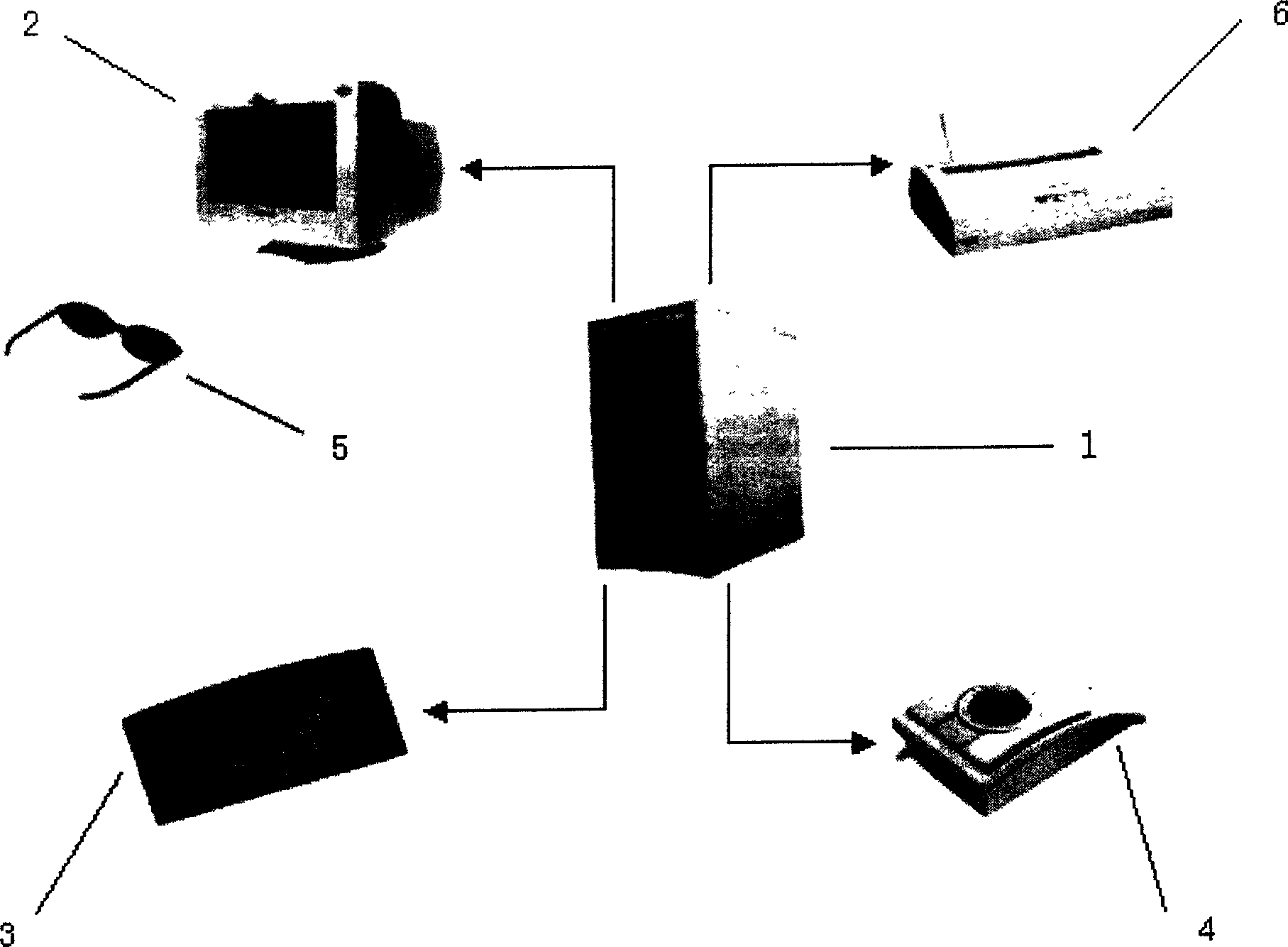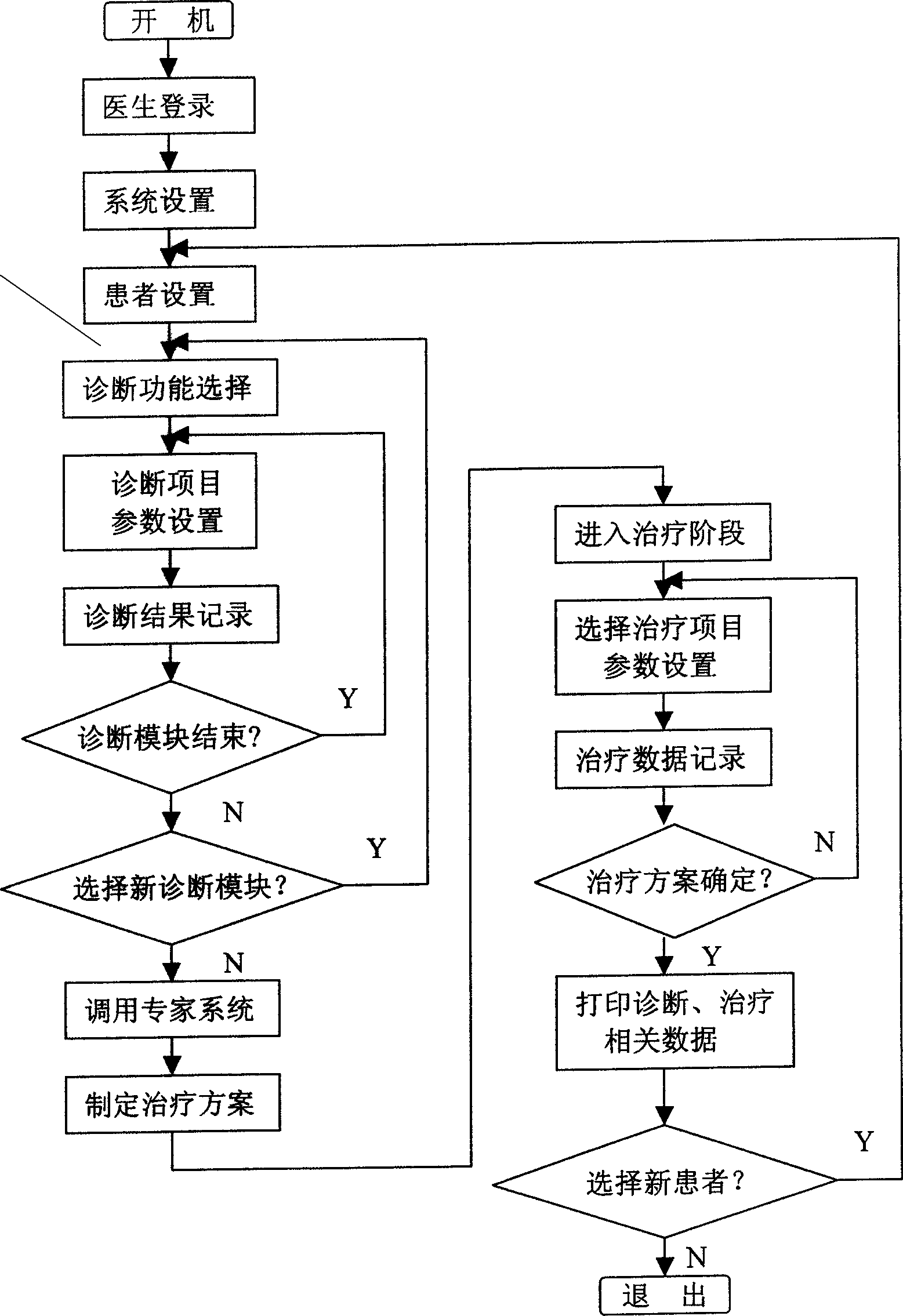Intelligent diagnosis and treatment instrument for infant's weak sight and strabism
An intelligent, therapeutic instrument technology, applied in the field of diagnosis and treatment of visual functions, can solve problems such as affecting the correct diagnosis and treatment of patients, lack of stereoscopic diagnostic methods, and difficulty in equipping diagnostic equipment, achieving high cost performance, remarkable curative effect, Full-featured effects
- Summary
- Abstract
- Description
- Claims
- Application Information
AI Technical Summary
Problems solved by technology
Method used
Image
Examples
Embodiment 1
[0013] Embodiment 1: The intelligent children's amblyopia and strabismus diagnosis and treatment instrument applies computer technology and equipment to realize the diagnosis and treatment of children's amblyopia and strabismus. It adopts object-oriented visual development tools Java and VC++, and has a good system architecture. The overall block diagram of its software is shown in the instruction manual. attached image 3 . The software is divided into two functions: diagnosis and training. The diagnosis function includes visual function and binocular vision function. The software flow chart is shown in the appendix of the manual. Figure 4 . In the visual function part, the E-word vision chart and children's vision chart modules are designed, and there are data recording and analysis functions for the preliminary judgment of amblyopia. The visual function diagnosis is operated by a doctor. The E-word vision chart module can select parameters such as screen distance, visual...
Embodiment 2
[0014] Embodiment 2: In the diagnostic part of the therapeutic apparatus, the binocular vision function diagnosis simulates the synopsis machine to carry out three-level visual function diagnosis, including simultaneous vision, fusion vision, stereo vision and the four-light test for diagnosing the inhibition of the left and right eyes, and is used for the diagnosis of strabismus . The parameter selection of simultaneous viewing includes screen distance, picture selection, left and right eye control. Two pictures, one red and one blue, are displayed on the screen. The blue picture is always in the center. If it is left eye control, the blue picture is on the left of the red picture, otherwise on the right. The child controls the movement of the red picture through the arrow keys on the keyboard until it coincides with the blue picture (this point is the fusion point). Return to the diagnosis interface, and the system records the fusion point. If the child thinks that the pic...
Embodiment 3
[0015] Embodiment 3: The treatment part of this system includes the training of monocular vision, eyeball movement and binocular vision function. It is a special application exercise for amblyopia eyes, which is conducive to visual development and improvement. Its software flow chart is shown in the appendix of the instruction manual. Figure 5 . The monocular vision module includes CAM, dynamic red light flashes and fine vision training. CAM training uses the principle that cerebral cortex cells have good responsiveness to different spatial frequencies, so that the cerebral visual cortex cells of children with amblyopia are subjected to a series of Spatial frequency (i.e. the thickness of the bar) bar stimulation. Set the parameters before training, including screen distance, grid width, rotation speed, training time and CAM type. The grid rotates at the selected speed and spatial frequency, and the child performs click and line drawing operations. Once the training time is ...
PUM
 Login to View More
Login to View More Abstract
Description
Claims
Application Information
 Login to View More
Login to View More - R&D
- Intellectual Property
- Life Sciences
- Materials
- Tech Scout
- Unparalleled Data Quality
- Higher Quality Content
- 60% Fewer Hallucinations
Browse by: Latest US Patents, China's latest patents, Technical Efficacy Thesaurus, Application Domain, Technology Topic, Popular Technical Reports.
© 2025 PatSnap. All rights reserved.Legal|Privacy policy|Modern Slavery Act Transparency Statement|Sitemap|About US| Contact US: help@patsnap.com



